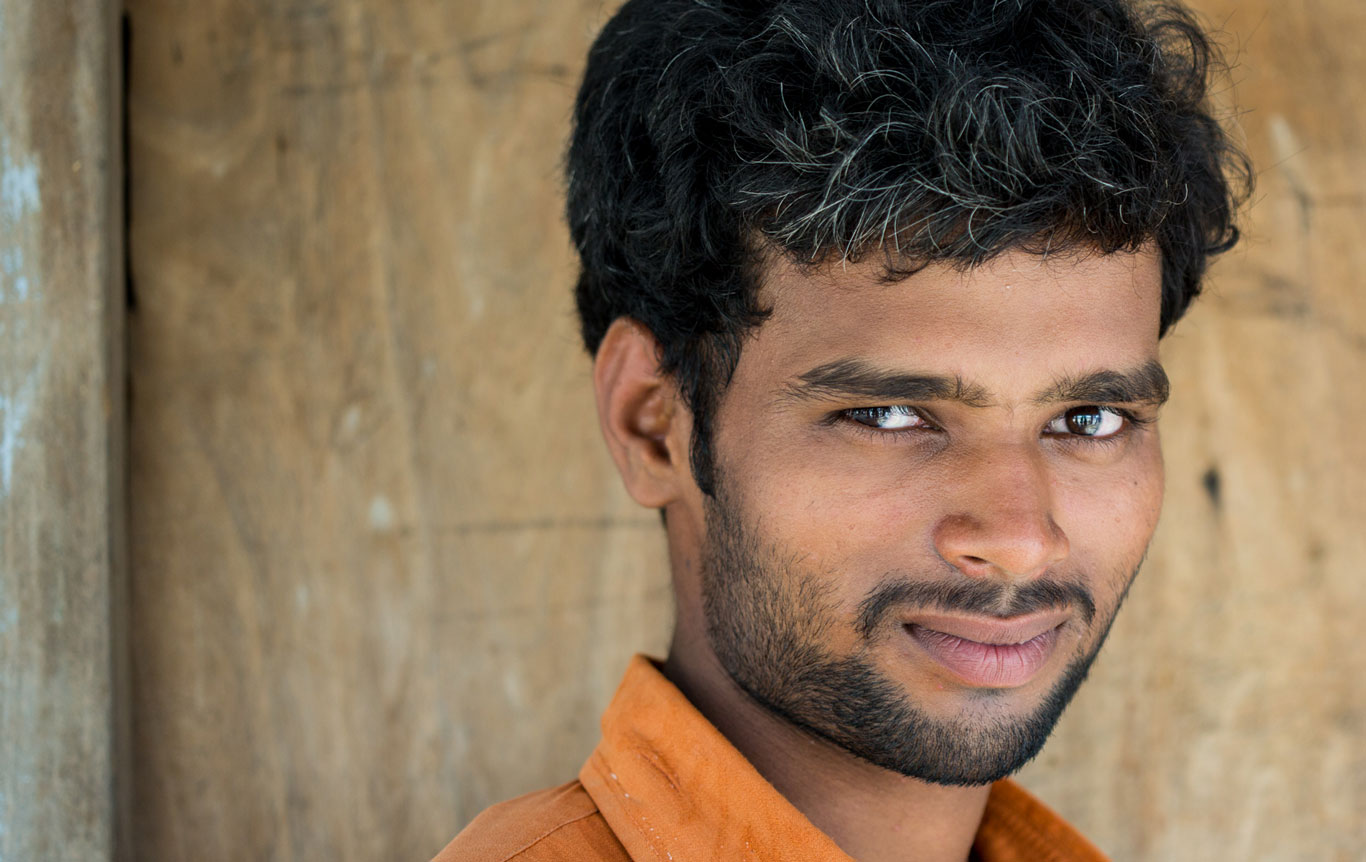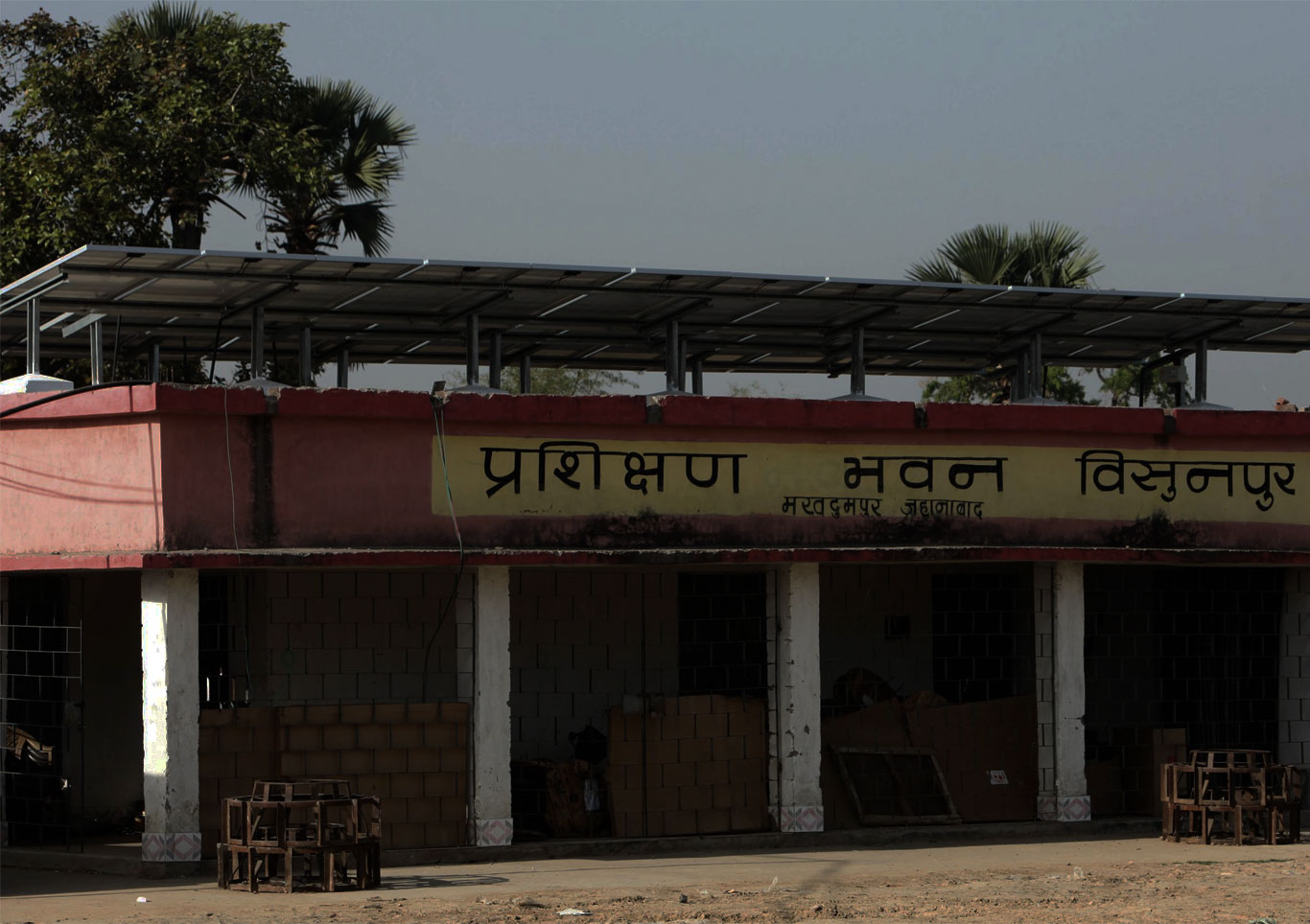
Dharnai Youth,
Solar fires up
local pride
Dharnai, Bihar — Santan Kumar, 19, is shy, likes to keep to himself and a young man of few words. But his eyes light up when asked about his new job.
He is working as an electrician and is responsible for the wiring of households that apply for an electrical connection from the recently installed solar microgrid in his village. This means he has a direct role to play in lighting up Dharnai, a village that went dark after sunset until a few months ago.
For over 30 years, high-tension electric wires have passed by the village without lighting up a single home inside it. This incredible reality of Dharnai had impacted the hopes and dreams of its youth, who grew up in an era of darkness, often leading to despair.
Young people like Santan, had little choice when it came to pursuing higher education or a proper career path. Options were limited, jobs were hard to come by.
After high school, Santan wanted to become an engineer. When that did not work out, he was left with two choices. He could migrate to nearby urban areas to seek employment, or he had to find some way to survive by tilling the land. None of the choices inspired him.
Then, in September 2012, opportunity knocked.
“I heard that an organization called Greenpeace had come to our village and they were going to bring us electricity,” Santan said. “They were going door-to-door with forms. I thought it was a good idea to get involved.”
Naveen Kumar, who was facilitating the work in Dharnai for Greenpeace, said that Santan showed great initiative. “He helped us out with the initial load assessment survey,” Naveen said.“Then when the developer, KRIPA Group, came to install the microgrid and the solar panels, Santan worked with the engineer overseeing the job, and picked up essential skills. After that he was employed by the operator, BASIX, and is now actively engaged with wiring up new households that have applied for a connection.”
According to the latest figures, over 250 out of 497 households in Dharnai have registered for an electrical connection. Around 90% of the wiring is complete and people are enjoying the benefits of locally sourced and produced electricity from the solar-powered microgrid. The system has been operational on a trial basis since March 2014.
Manish Ram, a renewable energy campaigner from Greenpeace, said the thinking behind Dharnai dates back to 2010. At the time, the organisation was campaigning for decentralized renewable energy and was engaged in dialogue with the former head of state in Bihar, Nitish Kumar. The aim was to develop viable alternatives to the centralized system of electrification that had left many off the grid.

“Since independence, the thought process in India has been to develop capacity and provide energy access to people through the centralized grid system, largely powered by coal-based thermal power plants,” Manish said. “If you look at India’s energy mix it is largely reliant on coal. We are trying to increase the share of renewable energy in that mix and provide a model solution that will lead India along the energy transition path toward a more sustainable future.”
After research results showed that Bihar had the worst electricity scenario, with over 80% of the population not having access to power, Greenpeace came up with a solution of approaching the problem in Bihar with a bottom-up electrification and top-down financing model.
“Through a cluster-based microgrid approach powered by solar, we managed to build a system in Dharnai that services the needs of all clusters of the village,” Manish said.
Once the system is officially inaugurated, the focus will be on developing consensus for a policy framework to support the expansion of the decentralized model. “The framework would need proper financing to make it viable. These are the two areas we are working on to expand the access to energy in the state,” Manish said.
For Santan, that translates into job opportunity. It also means he would not have to leave his home in search of employment. Now he can chart his own future and not have to follow on his father’s or grandfather’s footsteps and rely on farming to survive. The economic opportunities in the village are changing, and with it his dreams and ambition.
“I want to focus on my job at the moment and be good at it,” Santan said. “I like how electricity has changed my village. Not even in Patna (the capital of Bihar) would you find electric poles lighting up every alley like here in Dharnai.”
“The best part is there are no power-cuts in Dharnai,” Santan said with pride. “Even in Patna, you are never sure if the lights will be on when you are studying or cooking at night. But our electric supply system is dependable, reliable and it is managed by us.”
Santan is also part of the 20-member Village Electricity Committee (VEC) of his cluster or tolla. VEC is a local body made up of residents of each cluster. Its main function is to manage the power supply system within the clusters of Dharnai with inputs, advice and participation of villagers.
“We run a well-managed system here,” Santan said. “We listen to each other and work together. It is how it should be.”
Inspired by new possibilities, Santan finds it hard to limit his vision for the future.
“Dharnai can become Patna,” he concludes, “or maybe even better.”